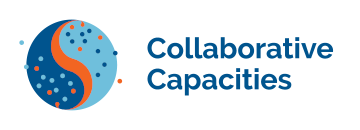Apr 2022, Sawsan Khuri. EDI is at the heart of innovation. We worked with a large organisation to establish a strategy for embedding equality, diversity and inclusion in their culture.

Equity, Diversity, and Inclusion (EDI) should be at the core of any and every workplace setting. People drive innovation, and research has shown time and again that diverse, inclusive teams tend to achieve better results. For example, the International Labour Organization stated in their 2019 report on Women in Business and Management that companies with more inclusive business cultures and policies see a 59% increase in innovation and a 37% better assessment of consumer interest and demand. So how might we structure a conversation around such an impactful yet sensitive topic?
The one stream that underlies the process is to establish a safe space right from the get go, one that allows open discussion which leads to positive solutions and action points. There’s a shape to the flow of conversation, and this one in my imagination is like a watershed (an ecosystem), with a river (of solutions) starting on high mountain ground and gaining momentum as it nears the coast to pour into the ocean (broader impact).
Collaborative Capacities facilitated a series of online roundtable EDI discussions for a large research organisation with global impact. Each roundtable focused on a theme, such as approaches to EDI data collection and handling, developing meaningful and enforceable policies, accessibility, and fostering a culture that encourages open discussion about this sensitive topic. Participants were invited from a wide array of public, private and third sector groups, and included staff at every level within the organisation.
An icebreaker established a safe space and solution-focused atmosphere, and we set the scene with a brief background introduction and status update on the theme under discussion. Participants were then divided into breakout groups where they drew on lived experience and suggested solutions. Our team facilitated the discussions using probing, open questions, capturing generative outcomes using custom-designed Mural boards while monitoring group dynamics and ensuring the safe space is maintained. At the heart of our facilitation practice is that solutions are inherent in a good discussion, we simply allow them to emerge.
Together, our participants co-created short-term, medium-term, and long-term actions for improving EDI within their sector. Short term actions that can be implemented within a few weeks are invaluable to build trust, they provide a statement of commitment that the intervention was not “just another futile exercise”. Medium term actions are those that people can start planning for and designing, and that might take a year or two to come to fruition, while longer term goals are those within a five year vision. All of these are then consolidated together in a Plenary session, where the power of action oriented discussions is exhilarating.
The challenge for the organisation is to then allocate time and resources to implement these actions. Follow up sessions could bring particular groups of the team together to start the next phase of the process. The methodology developed by Maitland and Steele in their book Indivisible (2020, Young and Joseph Press) provides an excellent approach for this, and is applicable to organisations of any size.
EDI is at the heart of innovation. A business that increases accessibility, inclusivity, and equity for all its diverse employees creates a stable, comfortable work environment promoting the development of new ideas. The more included and valued people feel, the more likely they are to be comfortable enough to share new ideas which may benefit the business. EDI works for all and benefits all. Diversity has a seat at the table, inclusion has a voice, and belonging to an equitable space is having that voice be heard.
In the end, it is all about flow: flow of communication, innovation and success.

